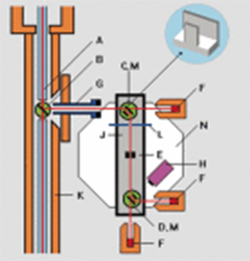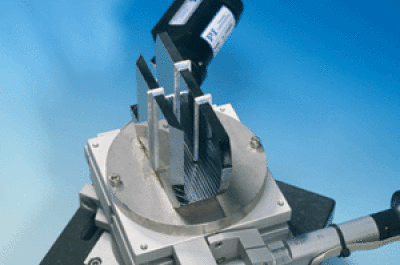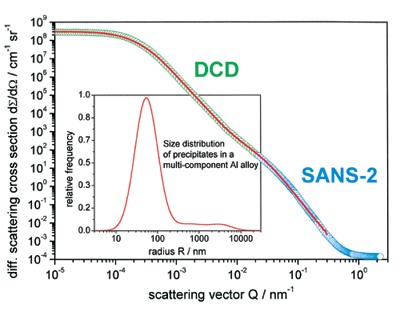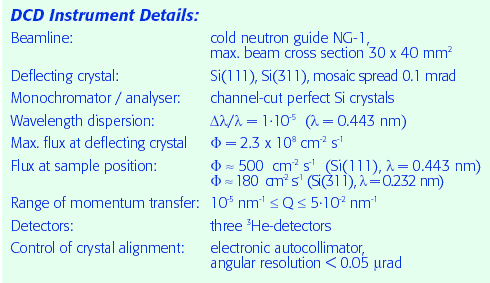DCD
The DCD (Double Crystal Diffractometer) instrument, of type of a Bonse-Hart camera, with an extremely high angular resolution of 0.5 µrad is used for ultra small-angle neutron scattering (USANS) experiments. It allows the detection of microscopic inhomogenities in materials in the size range 0.03 µm to 24 µm.

Fig. 1: Double Crystal Diffractometer DCD

Fig. 2: At the DCD quintuple-bounce channel-cut perfect silicon crystals are used to monochromatise and to analyse the angular distribution of the neutron beam
The DCD is located at a side position of the neutron guide 1 (NG- 1). The principal set-up of DCD is shown in fig.1. A part of the neutron beam coming from the cold source of the reactor is reflected by a pre-mono-chromator, the deflecting crystal, into the DCD and then monochromatised using a channel-cut perfect silicon crystal.
After passing a holding device for changing samples the angle distribution of the neutrons is measured by rotating the analyser crystal which is identical to the monochromator crystal (fig.2).
If there is a sample in the beam between the two crystals, neutrons will be scattered out of the angular range of the rocking curve (the angle distribution of the neutrons without a sample in the beam). The measurement and analysis of this scattering curve provides information on structural properties of the sample (fig.3).

Fig. 3: Formation of precipitates in a multi-component aluminium alloy after homogenisation
The angular distribution of the neutrons scattered by the sample was measured at the DCD and at the small-angle neutron scattering instrument SANS-2. The two measurements are exactly complementary. The differential scattering cross section (scattered neutron intensity) is shown as a function of the scattering vector.
The analysis of the scattering profile yields the volume distribution function of the precipitates as shown in the inset. The full line is the theoretical scattering curve calculated from this volume distribution.
